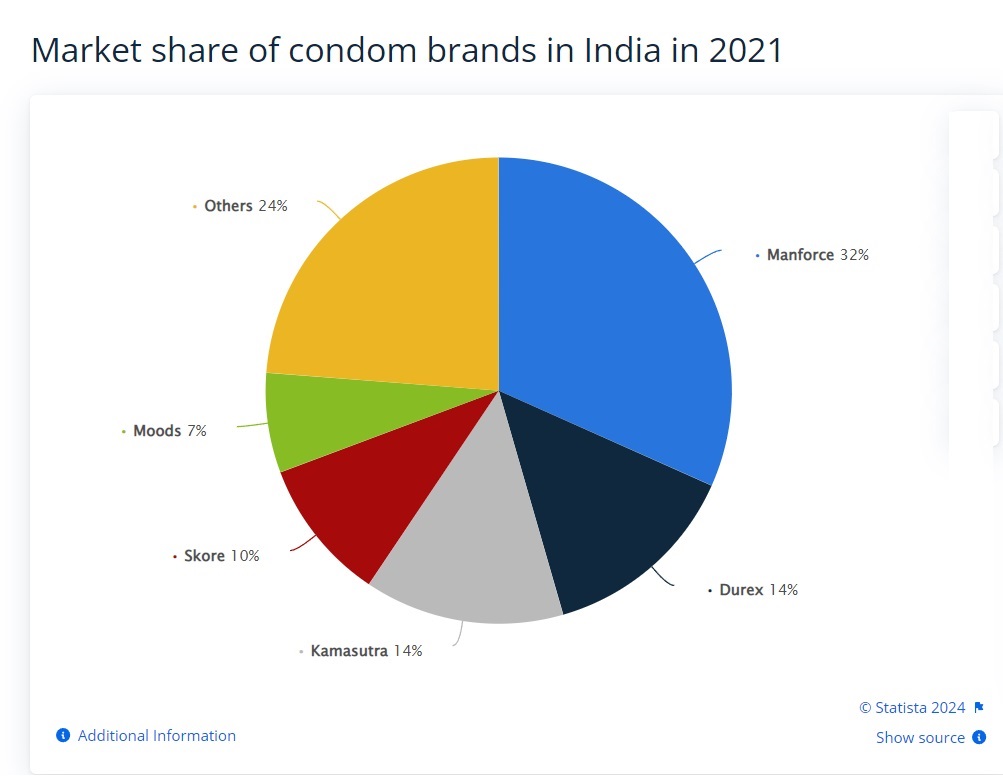1991: Breaking barriers – The birth of a sensation
In 1991, a revolution hit Indian advertising. Kamasutra condoms launched first-of-its-kind, bold controversial campaign, featuring Pooja Bedi and supermodel Marc Robinson in a series of bold and sensual visuals.
This was a groundbreaking moment. Doordarshan, the national broadcaster, refused to air the ad, but cable television picked it up, sparking national conversations about sex, intimacy, and safe sex.
This campaign, though controversial, is a milestone for its audacity in a conservative market. It challenged social norms and established Kamasutra as a brand unafraid to talk openly about sex.
The 1991 ad was a landmark for being the first in India to show the contraceptive as a tool of pleasure. Back in the early 1990s, most medical stores didn’t store hundreds of varieties of condoms targeted at giving you different kinds of pleasure – there was only one government-manufactured brand called Nirodh, which, according to Padamsee, was “the dirtiest product available in the country since the government made it.”
1990s – Building on boldness
Kamasutra continued to push boundaries throughout the 90s with campaigns that were playful, suggestive, and sometimes humorous. The brand cleverly used innuendo and double entendres to navigate cultural sensitivities while effectively promoting safe sex. This era saw the rise of the now-iconic tagline, “For the pleasure of making love” a message that resonated with a growing, young, and independent India.

2000s – Shifting gears: Education with a wink
As the 2000s arrived, Kamasutra’s advertising shifted towards a more educational approach. Campaigns focused on dispelling myths around sex and contraception, promoting responsible sexual behavior, and addressing issues like sexually transmitted infections (STIs) also became part of the mix. The brand didn’t abandon its signature humor entirely, but the focus became more balanced, combining education with a touch of lightheartedness.

Shifting landscape
The internet has undeniably played a role in shifting societal attitudes towards sex. Discussions that were once considered taboo are now more openly addressed. This has empowered sexual wellness brands like Durex, Skore India, Kamasutra, Manforce, and others to create bolder communication strategies.
Gone are the days of suggestive innuendo. Today’s sexual wellness ads confront topics head-on, using phrases like “finishing together,” “female orgasms,” and even “orgasm inequality.” Earlier this year, Durex released data revealing that “70% of Indian women don’t always orgasm during sex.” This data fueled their social media campaign, #OrgasmInequality, featuring actress Pooja Bedi discussing various aspects of sex and sexual satisfaction.
This shift in marketing reflects a growing public appetite for open and honest conversations about sexual health and pleasure.

New reality, new game
Kamasutra’s advertising journey offers valuable lessons for marketers and advertisers looking to create impactful campaigns in a competitive landscape. By embracing boldness, cultural awareness, and constant evolution, they have secured their place as a marketing pioneer in India. However, to capture market share and maintain brand recall, they need to evolve their advertising and marketing strategies to adapt to increased competition, evolving consumer preferences, and the digital landscape. By building on its strengths, Kamasutra can leverage its strong legacy and brand recognition by maintaining a bold voice and using humor with purpose.



